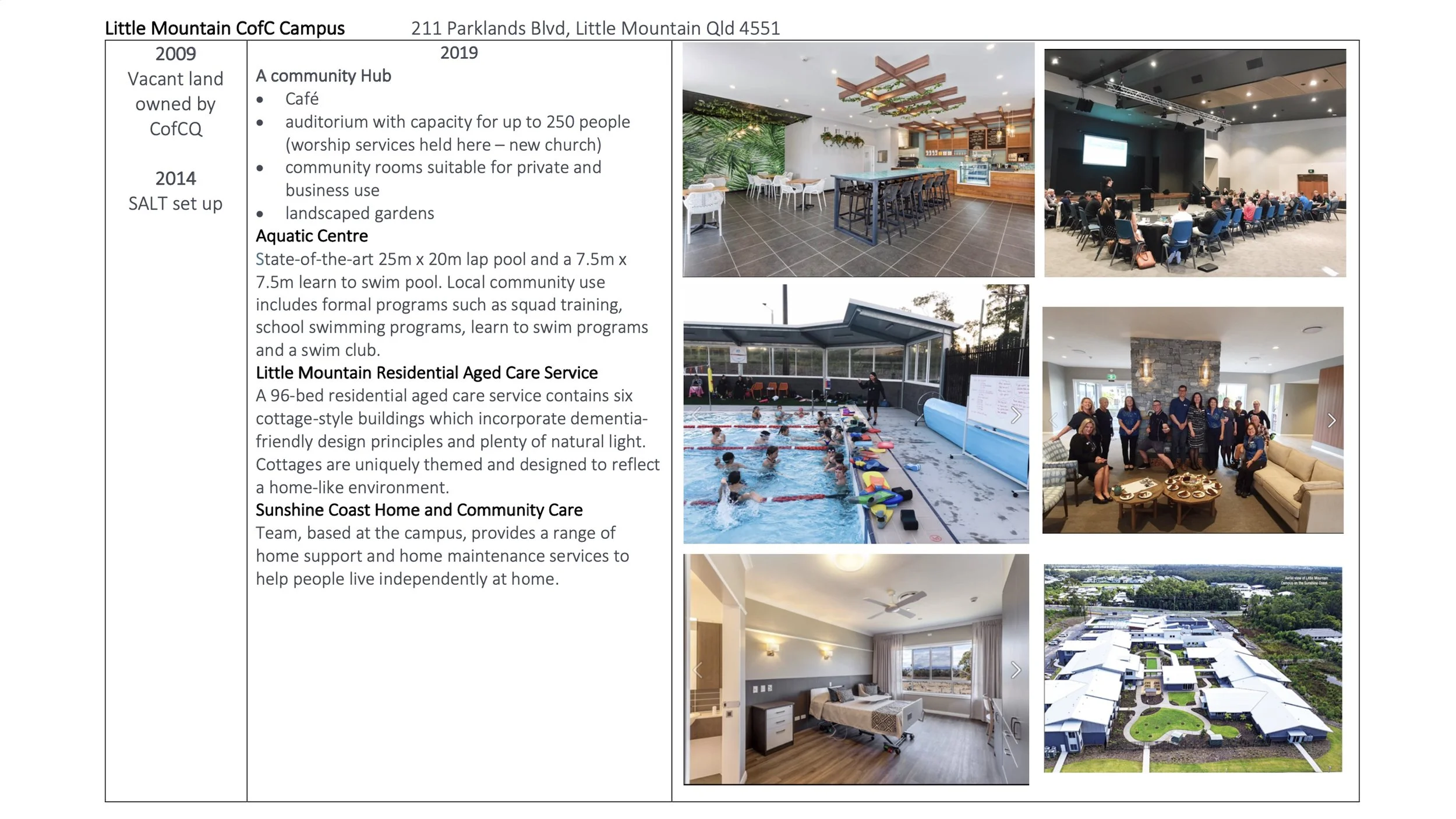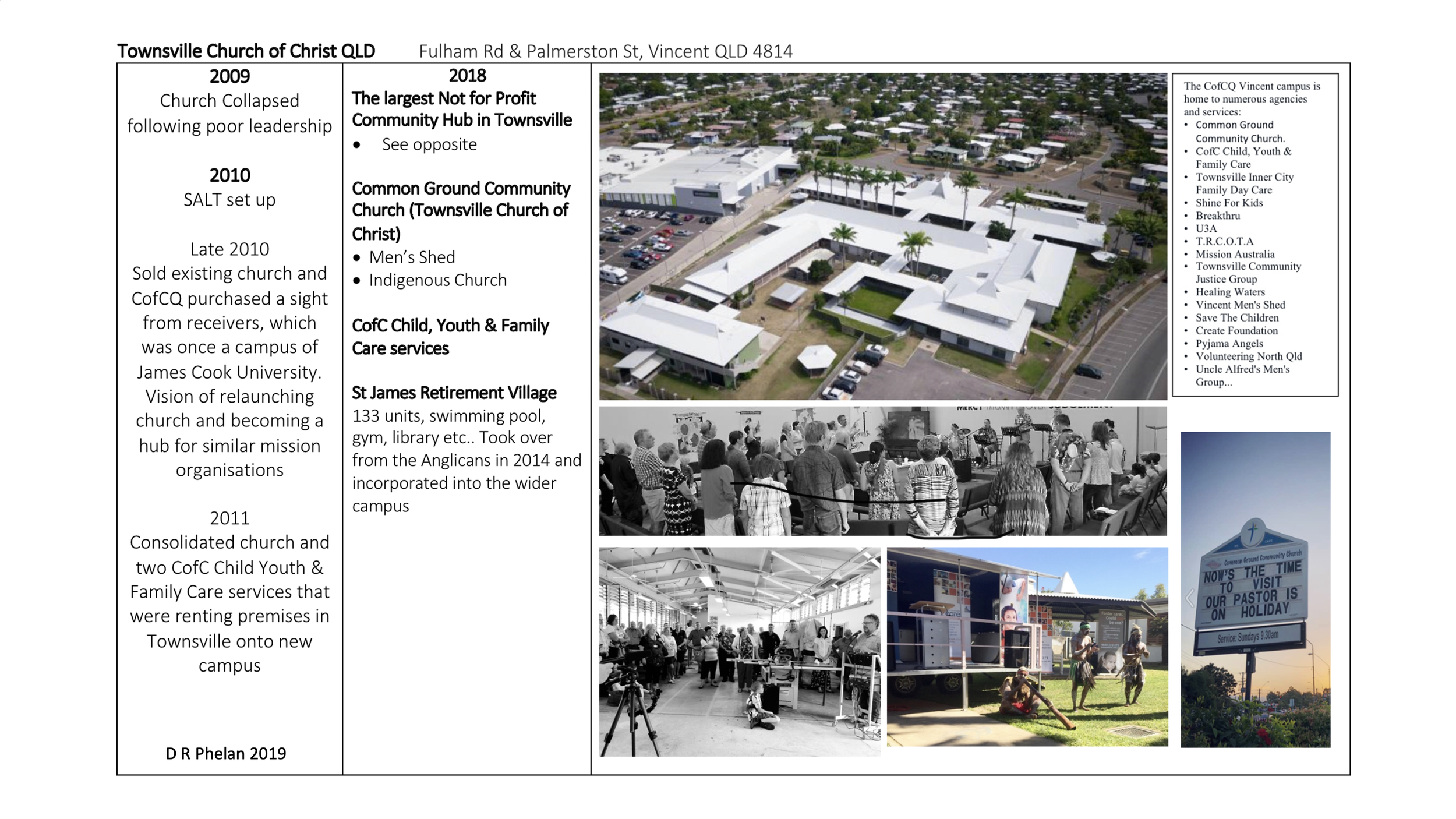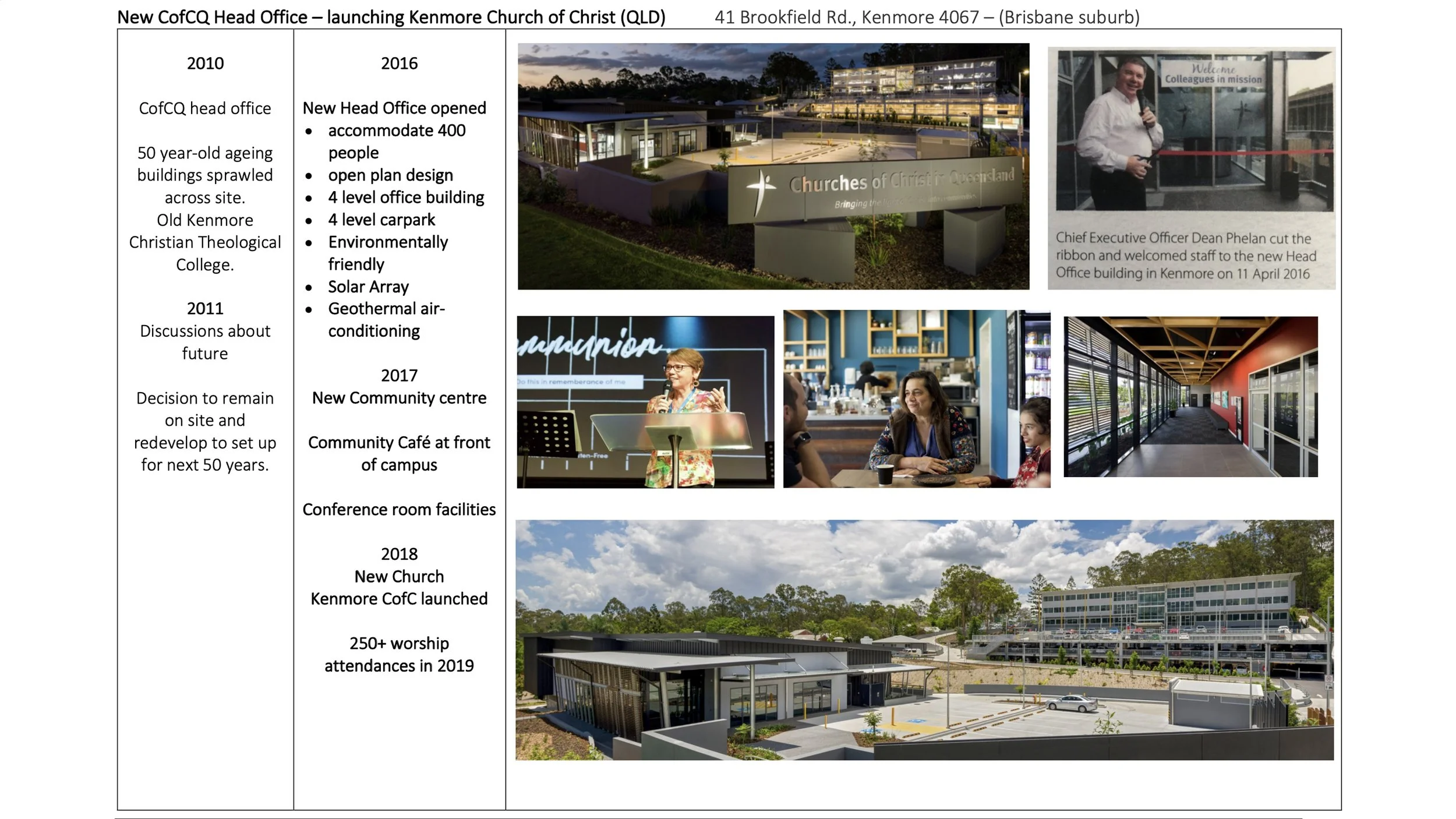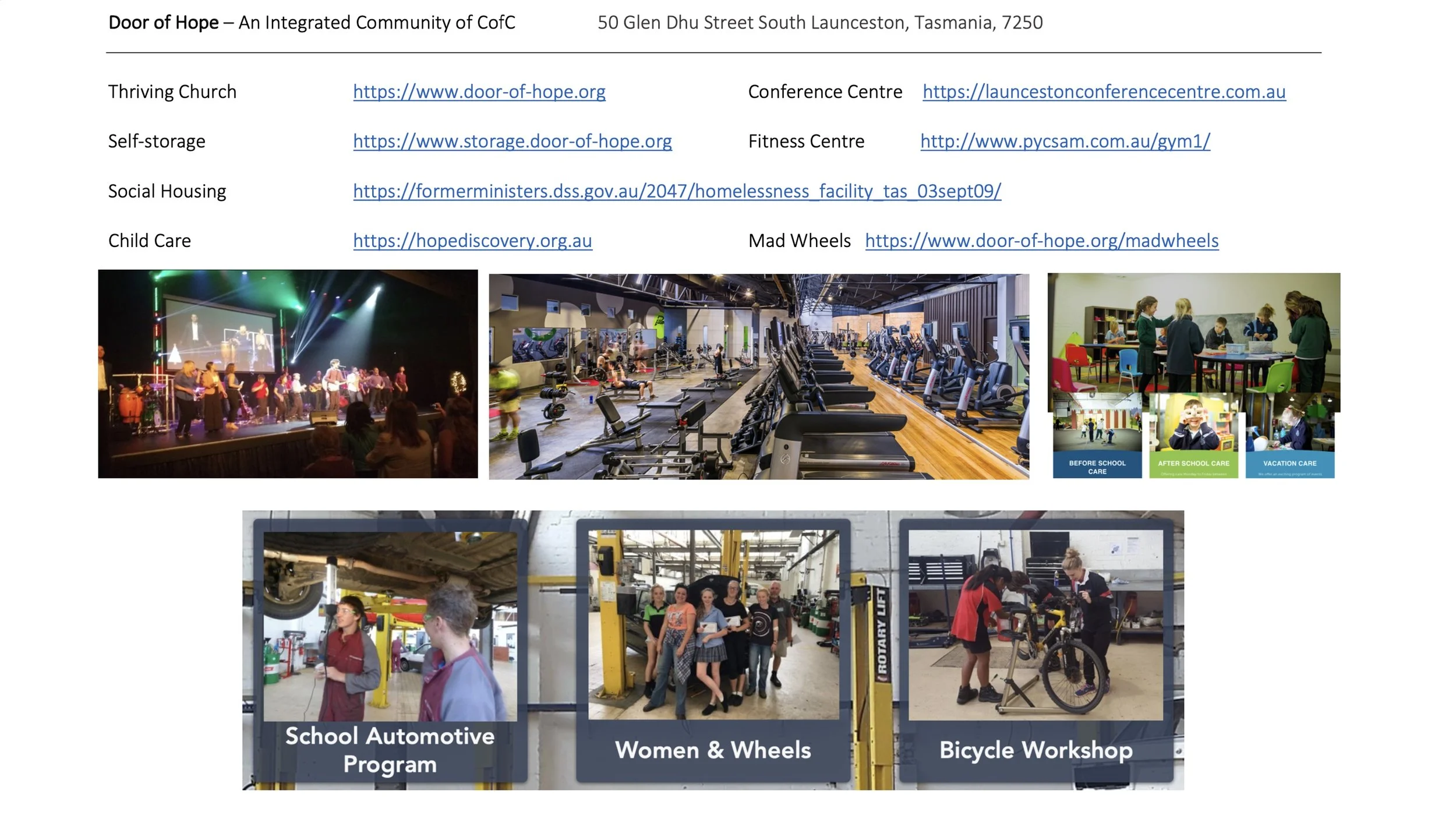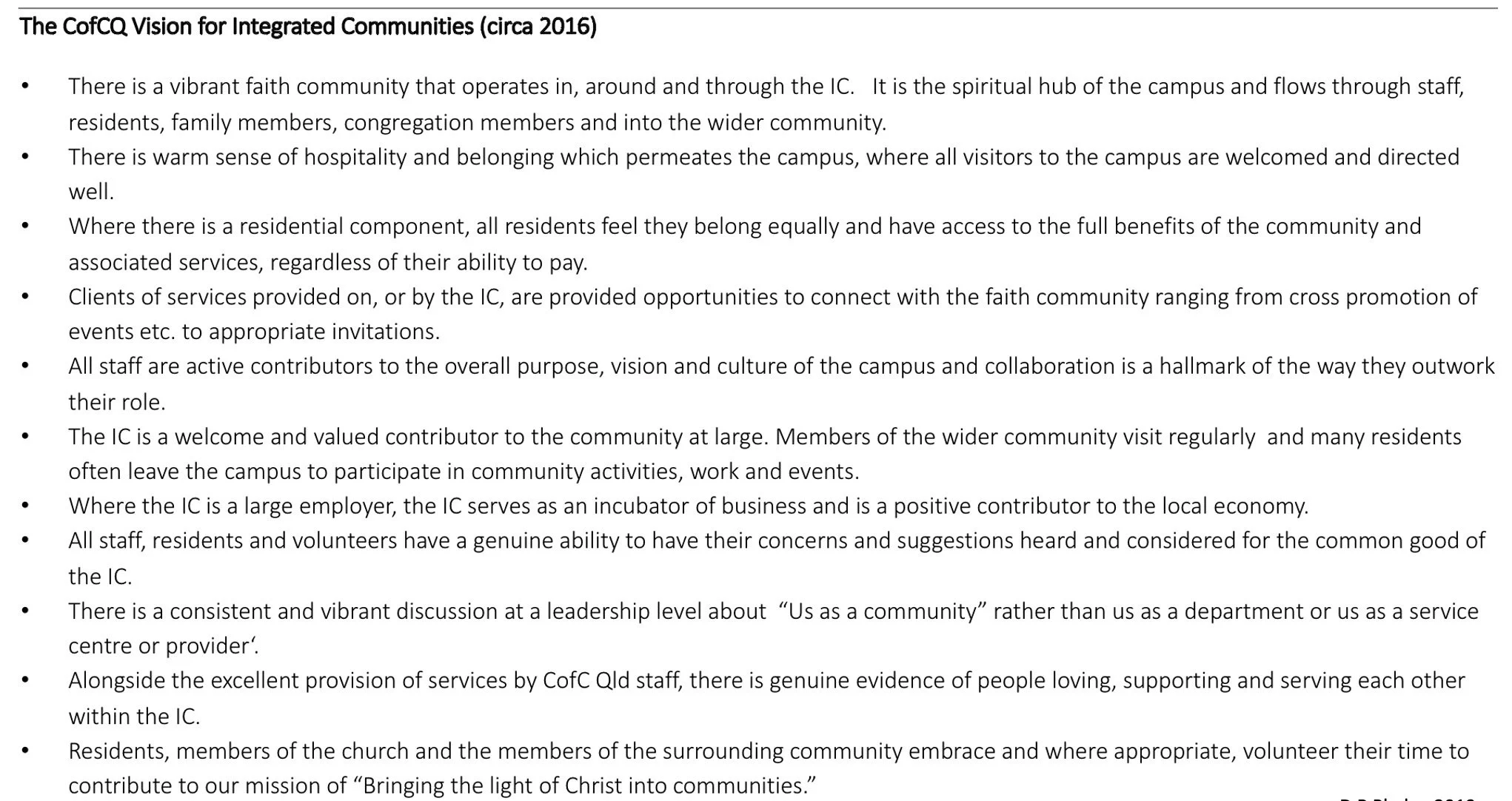Integrated communities
Dean Phelan
The Integrated Community concept evolved out of the challenges outlined in New Thinking Required. The inexorable 60 year decline in Australians’ interest in what most churches are offering, is a sad testimony. The challenge to evolve new ways of understanding and being God’s people in communities grows ever more in a world that seems to be crying out everywhere for more light and love.
This 2013 video was made to illustrate the concept of integrated communities - a model developed by Churches of Christ in Queensland. The example shown is real and the interviewees are real. In this case the integration brings together seniors housing, retirement living and aged care, together with cafe, gym, hairdresser, campus chaplaincy and other support services, with community centre activities and a community garden open to the neighbourhood.
Over ten years, a range of other integrated communities were developed using a staff and community development process of Action Learning Groups. These were called Strategic Action Leadership Teams (SALTs .. Matthew 5:13-16 Salt and Light). The Action Learning Challenge for each regional SALT was: “How could we enable more of the Light of Christ to shine in our community?” Over 30 such Teams formed and met regularly over the decade to collectively work through responses to this challenge in their communities. All I can say is that some staggering results were achieved by many hundreds of people that impacted tens of thousands of people.
A summary of the SALT process is included below. You can read more about Action Learning principles and methodology in these links. The theological and organisational principles underlying the development of these communities are discussed in detail utilising the real-life examples below, and many others, in our book Kingdom Communities.

